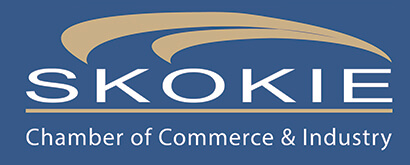The idea of buying a struggling business can feel like standing at the edge of a cliff, trying to judge if the winds will carry you or crush you. It’s not about fixing something broken just for the thrill—it's about inheriting a real mess and turning it into something living, moving, and viable again. The dream? A turnaround that works. The risk? Everything. Here's what you should actually consider before you sign the papers—and how to recalibrate that business for today’s unpredictable market.
Know What You’re Really Buying
Let’s get something straight: if a business is struggling, it’s not automatically a bad business. There’s often something deeper beneath the dust—something valuable. Your job is to find out whether that something still breathes. You’re not buying just its assets or its customer base—you’re buying its history, its bruises, its unfinished bets. The real question is whether you can spot the signal in the noise. That starts by seeing real turnaround opportunities in things like brand equity, existing customer loyalty, or mismanaged talent. The bones might be good. But if you don’t know what you’re looking for, you’ll miss them entirely.
Strip the Deal Bare
Now: diligence. But not the kind that lives in a checkbox spreadsheet. We're talking about the kind where you get your hands dirty. Call past employees. Talk to vendors. Cross-check contracts. Examine cash flow with the paranoia of someone who's been burned before. Go deeper than the books—because those books can lie. A rigorous due diligence process is your only real map, and if it’s drawn wrong, you're flying blind. Look for liabilities masked as assets. Look for future lawsuits disguised as long-time clients. You need to interrogate every line item like it's about to betray you. Because it might.
Structure with Intention
Once you're in, everything needs a reset—including your legal and financial foundation. Entity structure isn’t just paperwork—it’s risk management, future-proofing, and message clarity all rolled into one. Especially if you're absorbing liabilities or rebranding for a modern audience, forming a new LLC or restructuring the existing entity might be the cleanest path forward. Doing so through ZenBusiness gives you that reset button—without getting stuck in the bureaucratic mud. Don’t just inherit what the last owner built. Define your own frame.
Look for Life Beneath the Wreckage
A failing business isn't dead—it’s just out of rhythm. And if you're careful, you can find the hidden performance levers that haven’t been pulled yet. Maybe the company’s original mission still resonates, but the execution got lazy. Maybe it had a fantastic product—but no sales engine. These moments matter. They’re your footholds. The trick is spotting where the company collapsed under its own weight, and where it simply lacked the right push. The most salvageable businesses aren’t always obvious. They're the ones with momentum stored in the walls—you just have to knock the right one down.
Rewrite the Operating System, Not Just the Story
A new coat of paint won't fool anyone. If you want this thing to move, you’ll need to make it dance in a new direction. That means retooling workflows, hiring with intent, and building agility into your strategy from the ground up. Legacy processes have to go. Old marketing playbooks? Trash them. The point isn’t to just survive—it’s to build something resilient enough to outlast the next wave of change. Buy the business, yes. But then treat it like a startup with battle scars. Flexibility isn’t optional anymore. It’s the core product.
Plan the Turnaround Like a Surgeon, Not a Gambler
Good turnarounds don’t happen with raw hustle. They happen because someone saw a path and stuck to it, even when it got ugly. You need structure. Order. Cold logic. Start by applying structured turnaround phases—evaluate where it’s bleeding, stabilize its heartbeat, and only then begin pivoting into new markets or offerings. Don’t throw shiny tech at the problem. Don’t rebrand until you’ve rebuilt the core. Turnarounds that work aren’t flashy. They’re methodical, gritty, and incredibly specific. Make peace with the fact that your “wins” won’t always look exciting on Instagram.
Buying a failing business isn’t for the faint of heart—but it’s not for gamblers either. It’s for people who can see not just what’s broken, but what wants to grow. The ones who don’t just believe in second chances—they know how to build the conditions for them. The path is steep, the air is thin, and the odds might feel uneven. But for the right person, at the right time, with the right strategy? It’s not just doable—it’s worth everything.

